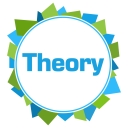It's generally accepted that a High Performance Team can be the engine that drives an organisation's success. Great teamwork is seen as the key to unlocking higher levels of creativity - and a more committed performance - from a group of people who work together in pursuit of a common goal. Examples of exceptional team performance are elaborated in business books, and by corporate trainers. Leaders, searching for more engaged performance or more innovative thinking from their own work group, feel an obligation to instigate team-building activities in search of superior performance.
Team-Building Myths
The most misleading myth is the one that is captured by the slogan 'There is no 'I' in team'. The truth is that High Performing Teams are made up of individuals, each of whom has the full measure of normal genetic drivers: each has a strong need for achievement and autonomy impelling their innate desire for success. What great team- building does is to help the individuals in a team understand how working together with others, who may think and behave quite differently, can lead to even greater success than working alone.
Another version of the myth is that personal differences are somehow put aside in a High Performance Team. In reality, individual differences are embedded in our genetic make-up. They are often the well-spring of the unique expression of human thinking which individuals bring to the team table, and it is the very richness of these differences that can result in a well developed team becoming an abundant source of ideas.
A third fallacy is that exceptional teams suppress their thoughts and feelings in order to avoid conflict. The opposite is the case. In exceptional team environments, there is a robust acceptance of conflict, coupled with determination to hold each other accountable for the achievement of the team goals. What exceptional teams acquire are ways of addressing and resolving conflict through reciprocal understanding and trust. This is trust that can tolerate vigorous debate and disagreement as a result of mutual awareness of the value of difference; a team that can recognise that different preferences for perceiving, deciding, thinking, expressing and creating structure are not incompatible; rather, they are the diverse strands from which great team performance is woven.
Team-Building Process that Works
It follows from the thoughts above that building team performance can never be superficial. It may be easy to organise a 'games day' or a 'corporate great race', and these activities will generate good feelings in the group. However, they rarely survive the first serious disagreement or misunderstanding, simply because there is no serious encounter with these two key dimensions of team performance:
- Understanding the different characteristics that individuals bring to the team;
- Appreciating the ways in which individuals must work together in order to get the best from each other.
Understanding individual Difference
People are different in many ways, but the psychologist CG Jung was able to reveal that the apparent uniqueness of individuals disguises some clearly discernible patterns of preference. Many of these patterns are very visible in the workplace if we know what to look for. These patterns, once understood, provide important clues about how we can work effectively with other people.
By elaborating Jung's ideas in their inventory of personality differences, Katherine Briggs and her daughter Isabel Briggs Myers created an effective and reliable way of explaining individual preferences. The Myers-Briggs Type Indicator (MBTI) is recognized as the most valid and useful process available for describing the significant differences between people. These are differences that can divide a team when they are not understood, but which can energise a team, and liberate team members to do creative work, when they are recognised and appreciated.
By building a thoughtfully-prepared MBTI workshop into their team development activities, teams develop a strong sense of the differences between team members; an understanding of the strengths that individuals bring to the team, and a strong awareness of how to tap into those strengths.
Ways of Working Together
As team members encounter the personality preferences revealed through the MBTI, a leader who is experienced in team-building can use the discussions that flow from the activities in an MBTI workshop to create powerful conversations about the nature of the team. These conversations will include:
- How individual preferences can combine to achieve team purpose;
- How to manage frank conversations and conflict between team members;
- How to use MBTI profiles to increase trust between individuals;
- An appreciation of the way in which difference contributes to collective achievement.
These substantive conversations about the nature of teamwork show team members how to reconcile the apparently conflicting demands of personal fulfillment and collaborative achievement, through open dialogue and a focus on each other's strengths.
Rob Stones, 2015
Rob Stones is a Sydney-based consultant who is a qualified MBTI professional and an experienced team-building coach. Check the our leadership development page.










